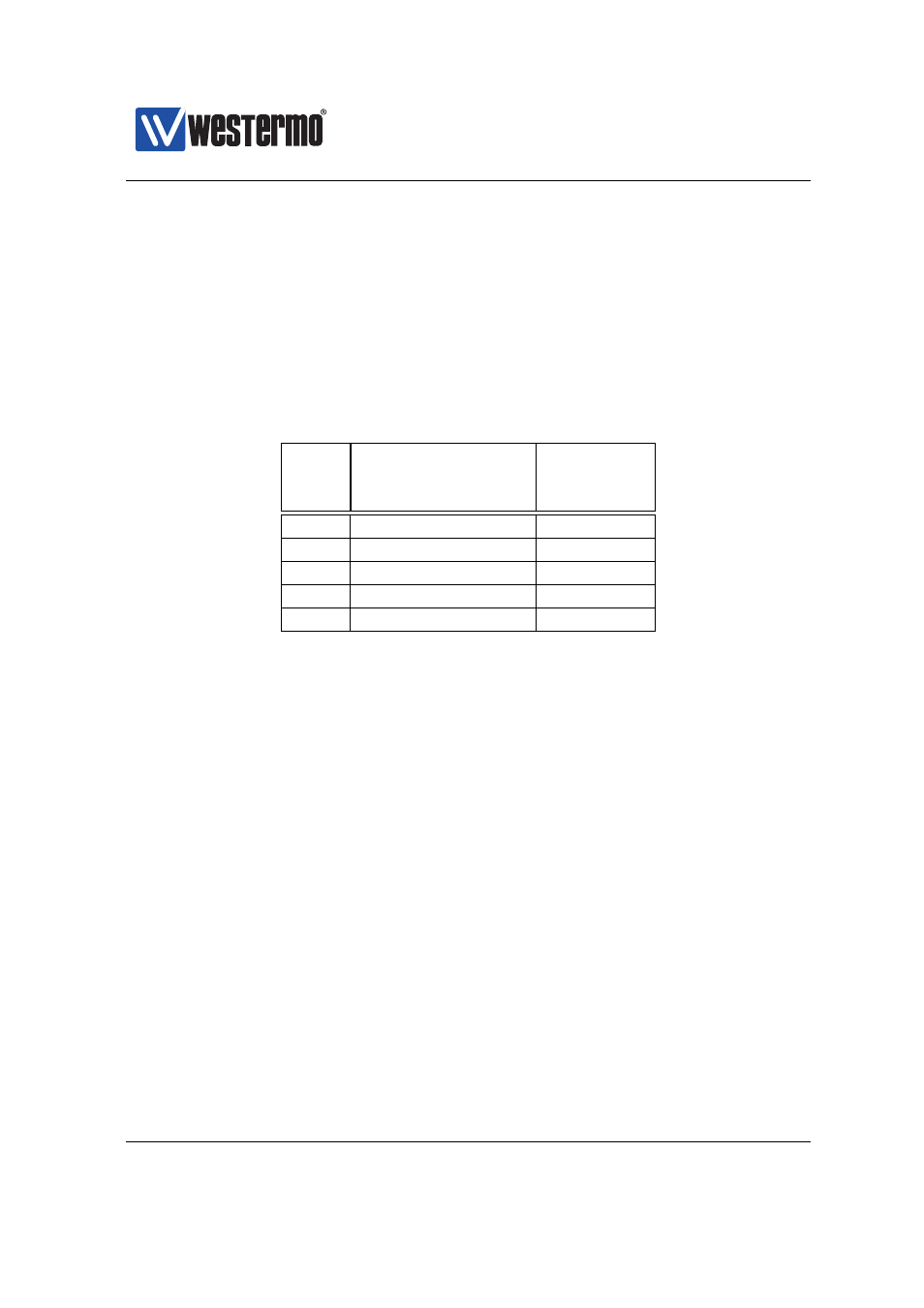Sections 12.1.1, Section 12.1.1 – Westermo RedFox Series User Manual
Page 256

Westermo OS Management Guide
Version 4.17.0-0
12.1.1
PoE Power Classes
When plugging in a PoE unit to a PoE port on the switch, the switch will detect the
class of the connected PoE unit, depending on the unit’s resistance and thereby
its maximum power consumption.
lists the maximum power consumption for units of the different PoE
classes, as well as the (somewhat higher) power actually allocated by the switch,
which considers cable losses. Thus, when admitting a class 0 unit, the switch
allocates 15.4 W to ensure 12.94 W reach the PoE unit.
PoE
Max Unit Power
Allocated
Class
Consumption (W)
Power (W)
(P
css,nt
)
(P
css,oc
)
0
12.94
15.4
1
3.84
4.0
2
6.49
7.0
3
12.95
15.4
4
25.50
30.0
Table 12.1: Power allocated to and consumed by units of different PoE classes.
It is also possible to configure a maximum power limit on each individual PoE port,
see
. The power allocated on the port then becomes the minimum
of the (a) configured power limit, and (b) the power allocated for attached unit’s
class (as listed in
The following additional classification is made for the connected unit depending
on resistance:
❼ Good: Ok. A PoE unit is connected. (Resistance within specification of PoE
class 0-4).)
❼ Open: Ok. Port not connected. (”Infinite” resistance, i.e., open circuit).
❼ Short: Ok, when non-PoE unit is connected. (Resistance determined as short
curcuit.)
❼ Low: The connected unit is detected as a PoE unit and served, although its
the resistance is too low to meet the PoE specification (and too high to be
determined as short circuit (non-PoE unit connected)).
❼ High: The connected unit is detected as a PoE unit and served, although its
256
➞ 2015 Westermo Teleindustri AB